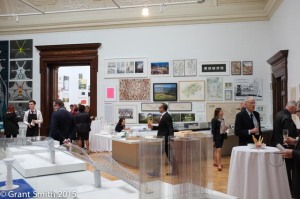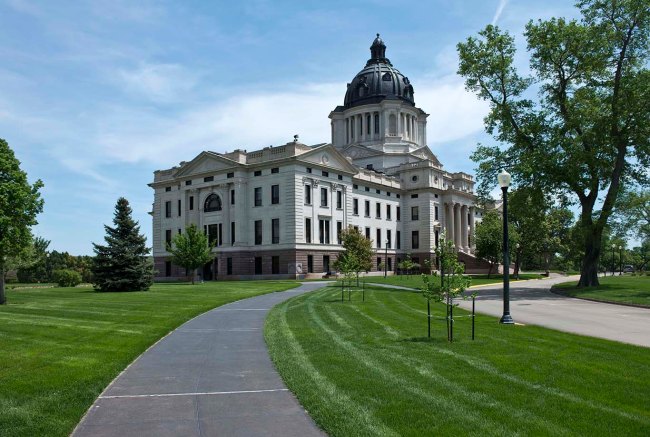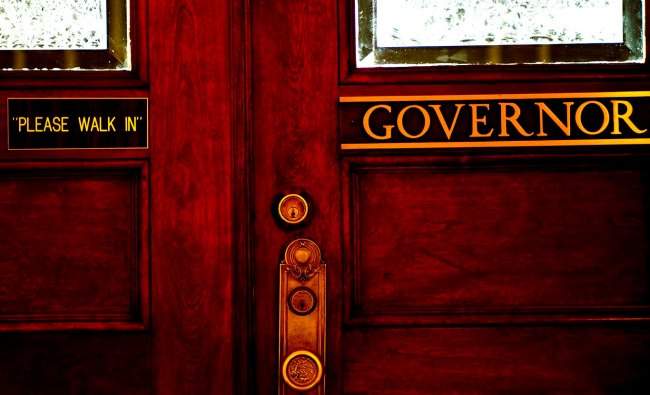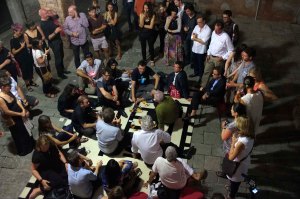The longest ride I have attempted was done on a hire bike, with no pannier, so the aching lower back pain I had was the result of a backpack with too much weight. Next time I’ll pack lighter.
I hadn’t used isotonic drinks before, preferring water on rides, but I found the added glucose, supplemented by sweets, to be vital to keep up energy levels and tackle the steep hill on our return.
My legs and thighs felt good and I could have continued cycling, but the back pain was the only negative effect.
Leaving Basel, my fellow rider, Peter Murray and I visited the Vitra Design Museum at Wiel am Rhein, thrilled at the daring concrete planes and skewed walls of Zaha Hadid’s fire station, enjoyed lunch and a browse through the catalogue of Vitra furniture displayed so informatively and seductively at Herzog de Meuron’s showroom that balances long beams on top of each other. Each one ending with a pitched glazed full height window, giving panoramic views over the countryside. Families come out to the estate to picnic and window shop, taking guided tours of the complex.
Getting underway from Weill eim Rein, we spent a little time identifying the route out to Freiburg. This was a cycle track that ran parallel to the road, through forest, vineyards, orchards and maize crops. Before Mullheim, several kilometers of road had to be negotiated and shared with cars, but all cars passed leaving plenty of room. Part of this route was a downhill run on a 10% gradient. Great fun, but it the same couldn’t be said of the ascent on the return leg.
The cycle paths are in excellent condition, with no potholes or tree routes breaking through the surface. At the junction with roads that employ roundabouts, cycle paths meet the round some 20 metres away from the roundabout. Vehicles approaching the cycle path give way to cyclists, and drivers are aware of cyclists, stopping in plenty of time. Unlike the UK, where drivers assess the distance between them and the cyclist to see whether they can make a turn before the cyclist arrives at the same point, I had the impression that cyclists were treated as fellow road users, but more vulnerable and thus deserving more attention and care. This integrated planning, which considers all road users, takes cyclists off roundabouts (which are the most dangerous places for cyclists) and reduces the risk to the cyclist.
The roundabouts and approach roads are planted with wildflowers, softening the landscape and providing little dances of colour.
Signage between towns is often patchy, though once in the larger cities (like Freiburg) signage is clear and cycle routes around town are easy to locate.
In Freiburg, which has a large pedestrian precinct in the medieval city, the only cars that I saw were taxis, and they look out of place in the small cobbled streets. On our return to Basel, we did have trouble locating the train station, as all the signage is directed at vehicular traffic.
The hire bikes were solid mountain bikes, which ran comfortably, with smooth gear changes and good brakes. A pannier rack would have been useful. Returning the bikes we cycled down the ramp to the bike parking underneath Basel station. This is a vast cycle park, accessed by a key system, providing secure and clean parking.
Returning to London City Airport, I cycled home to Hackney through Silvertown and was pleased to find a shared cycle path similar to those I had used in Germany. It runs for just over a mile, running out at the roundabout by the old Blackwall dock. This is a large and dangerous roundabout, used by trucks and busy with cars, and it’s poor planning that leaves the cyclist to negotiate this hazard, before joining the cycle super highway on the A13.

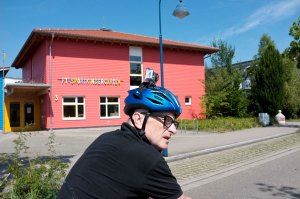

Freiburg’s Canals











